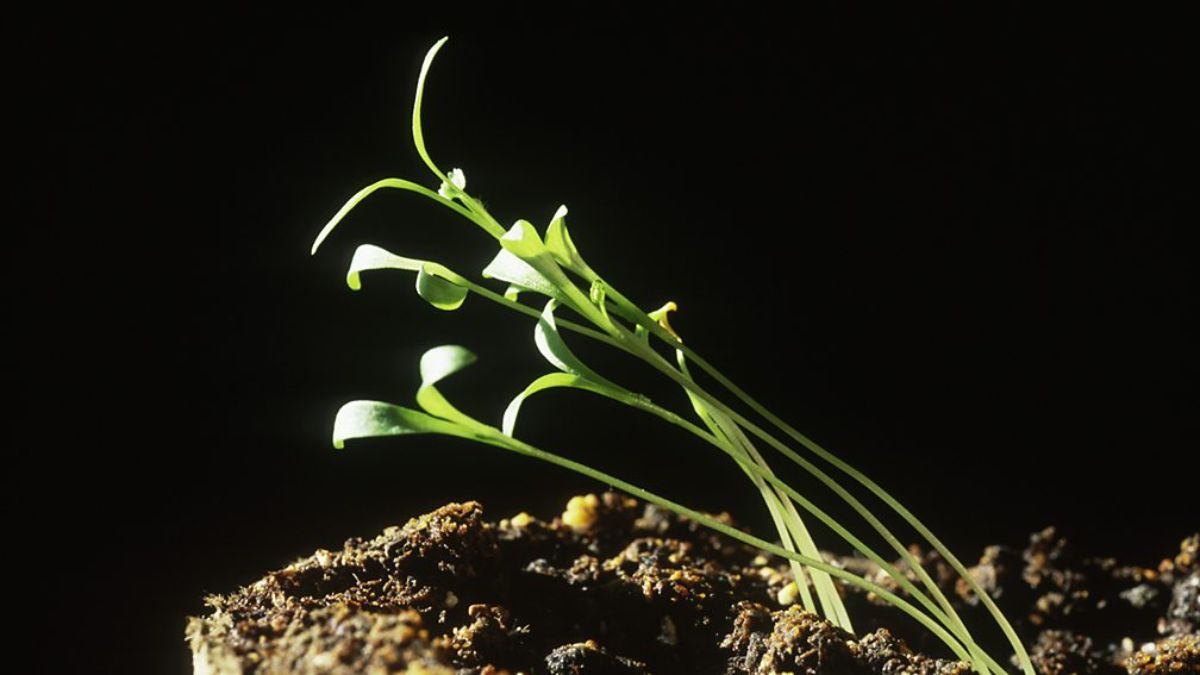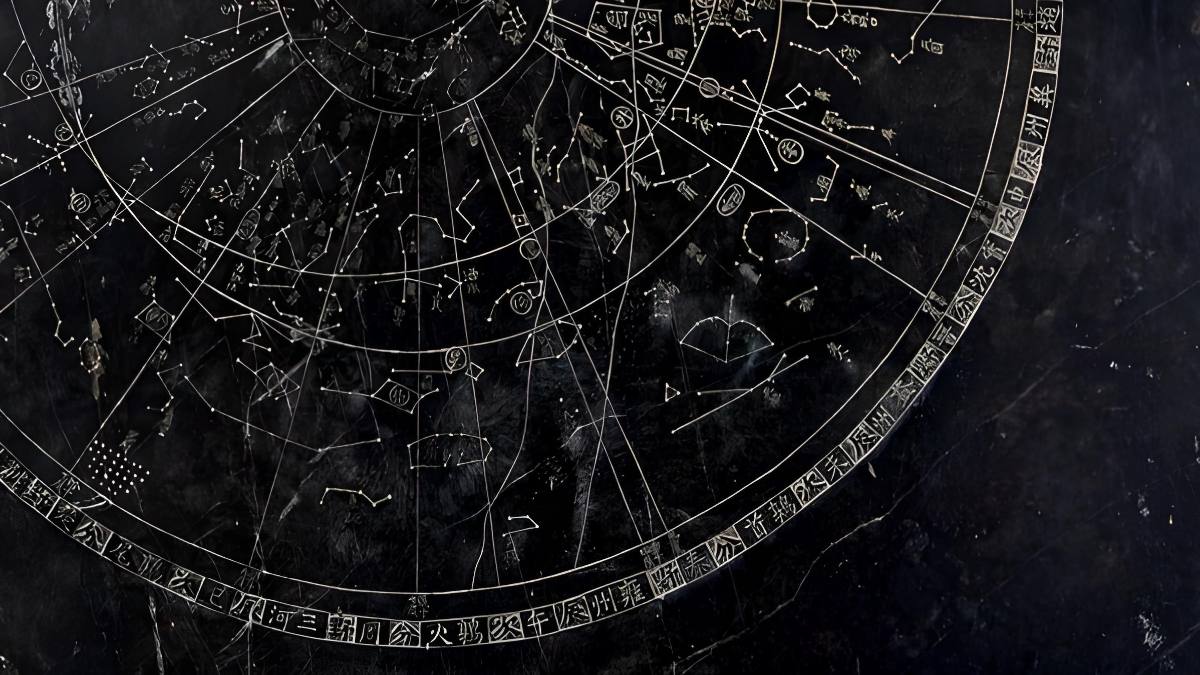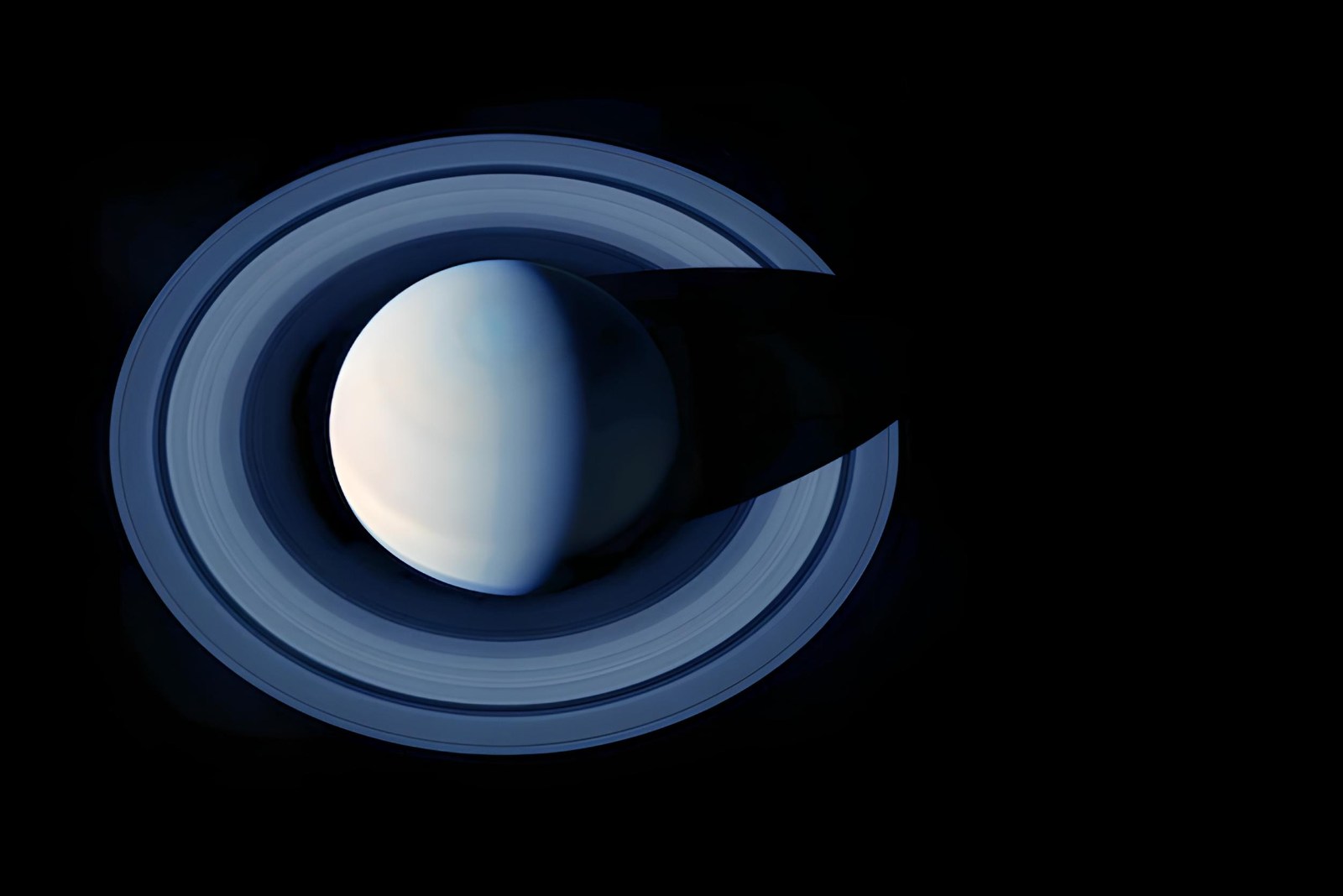The Sun is functioning normally and serves as the reliable core of our solar system. But things won’t remain the same for long; a slow but steady shift in our central star has already started, and it is altering our universe in irreversible ways. But what does this portend for Earth, the Sun, and the rest of our solar system? Our Sun, like all stars, is through a life cycle that will profoundly alter both it and its surroundings. The present yellow dwarf star will eventually become a red giant and then a white dwarf. Astronomers are now able to provide a fairly accurate prediction of when these phases will occur and the effects they will have on the Sun, the solar system, and Earth.
These possibilities, however, are not particularly encouraging for Earth. Because the Earth and its biosphere begin their decline and eventual demise aeons before our home star reaches its last stages.
A star that’s 4.6 billion years old
It has weathered the storms of its early days; its core is steadily producing energy via the fusion of hydrogen atoms; and the planets that make up its “court” are all cruising along in their orbits with relative calm. In its present state, the Sun is a typical, somewhat unremarkable main-sequence star.
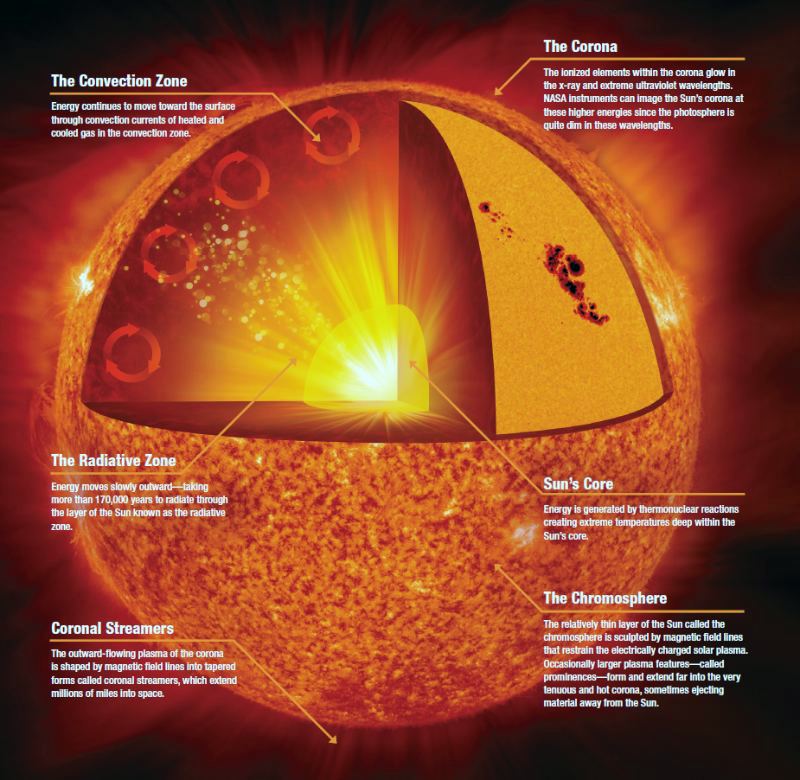
But don’t let the calm, apparently constant look fool you. Time passes for our Sun, too, although extremely slowly in comparison to the speed at which we live. Similar to the life cycle of every star, it begins with slow transformations and then experiences dramatic acceleration later on. Some of them can be measured right now. For instance, astronomers have determined that the Sun is around 300 K hotter and 30 percent brighter currently than it was when it created some 4.6 billion years ago. Since then, its circumference has grown by around 6%.
And there’s been plenty of action inside our star as well: at the Sun’s core, where temperatures exceed 15 million degrees and pressures of over 3.80 trillion per square inch combine to fuse atomic nuclei. Hydrogen is used as a fuel in this nuclear fusion process. An estimated 564 million metric tons of hydrogen are converted into helium and energy every second, with most of this heat and radiation being lost to space.
For this reason, the Sun loses around 130 trillion tons of mass per year, or nearly four million tons of mass every second. However, this loss of mass is negligible when compared to its entire mass of 1980 quadrillion tons.
Increase in nuclear fusion activity
Significantly more serious is the fact that the Sun has burned up around half of the hydrogen fuel stored in its core since the start of its nuclear fusion. However, the radiation pressure from the fusion process weakens as the hydrogen density in the core drops. This weakens the Sun’s ability to bear the pressure of the solar matter around it, leading to a slow, steady process of compression in the Sun’s core.
Because of a rise in pressure and temperature inside the Sun’s core as a result of this steady constriction, the rate at which hydrogen fusion occurs steadily increases, leading to a brighter and hotter Sun over time. As a result, the solar furnace becomes hotter and hotter over time. Because of this, our star’s brilliance rises linearly at a rate of around 1% every 110,000,000 years. Therefore, after nearly a billion years, the Sun will be generating 10 percent more radiation than it does now.
The Earth as a whole is affected by this…
Start of Earth’s last days
Our Sun is currently radiating several percent more forcefully than it does now, and the UV and heat radiation reaching the earth is accordingly severe; in only a few hundred million years, life on Earth will be uncomfortably hot and humid. It also alters the Earth’s atmosphere and material cycles, leading to a global warming that is significantly more severe than the current human climate change.
CO2 and the weathering
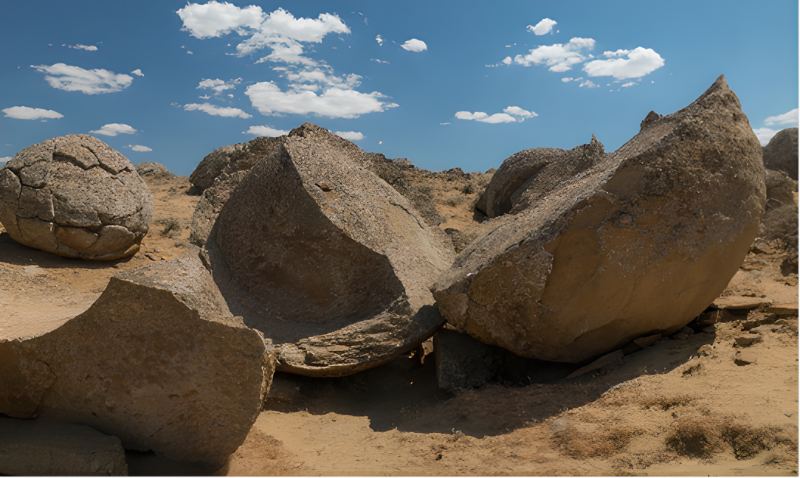
It is well established that increases in both radiation and temperature have a significant impact on the chemical weathering of rocks, a process that has driven severe climatic shifts several times throughout Earth’s history. For instance, the Appalachians’ development about 450 million years ago may have triggered a glacial period. When silica-rich volcanic rock first rose from the ocean and made contact with air, chemical processes occurred that bonded vast amounts of carbon dioxide from the atmosphere. This caused a worldwide decrease in this climate-warming gas, and thus, the planet cooled.
In a few hundred million years, a comparable event will take place, but without the cooling. According to Jack O’Malley-James of the University of St Andrews and coworkers, “rising temperatures promote silicate weathering, increase CO2 sequestration, and hence lower the CO2 concentration of the atmosphere.” Even if this has a negative impact on the greenhouse effect, rising solar radiation more than makes up for it. That’s why, despite declining CO2 levels, the planet is growing hotter and drier.
Reduced vegetation
Plants are particularly vulnerable to this change: Their productivity is dwindling because they need a steady stream of carbon dioxide for photosynthesis, and this supply is dwindling. The first of them will reach its limit in around 500 million years. O’Malley-James says that in around 500 million years, the atmosphere will have 150 parts per million (ppm) of carbon dioxide, which is too high for plants that employ the C3 metabolic pathway for carbon fixation.
However, this implies that many of the dominant green plants we see now would perish, including deciduous forests, herbaceous blooming plants, and the majority of the food crops we rely on. Coniferous forests and evergreens will also die out as a result of rising temperatures and falling CO2 levels.
About 600 million years from now, the once verdant tropics and temperate latitudes will be covered with arid steppes and deserts. Only drought-resistant plants with very efficient CO2 metabolic pathways survive in these conditions. In addition to the more well-known C4 plants like grasses and cereals, other examples would include CAM plants like bromeliads, cacti, and lilies. They may survive for tens of millions of years, much beyond the lifespan of trees and bushes.
The decline, however, is irreversible, as O’Malley-James reports: “Plant biodiversity is decreasing until only those that can best survive drought, nutrient deficiency, and heat survive.”
Like a reverse evolution
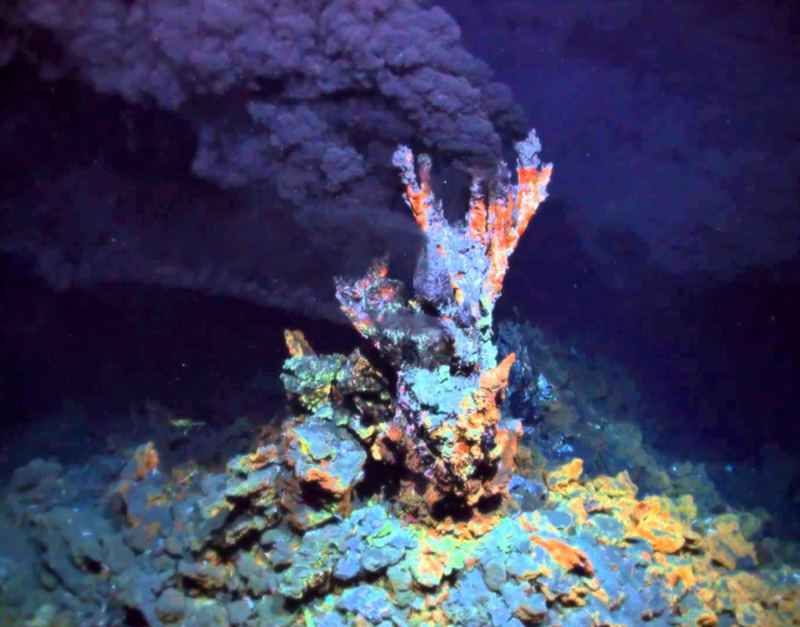
Assuming Earth survives another 600,000,000 years, it will no longer be a verdant world. Dry steppes and deserts will replace much of the land, and vegetation will be almost extinct. This will have an effect on our planet’s atmosphere, as British scientist Jack O’Malley-James puts it: “The disappearance of plants will cause oxygen and ozone in the atmosphere to sink further and further.”
It’ll start with the big animals
The rest of life on Earth is likewise affected by this. The expert argues that as the plants at the base of these food chains vanish, so do the creatures that rely on them for survival. As a result, huge herbivorous animals are the first targets. For the next few million years, other prey species, including smaller mammals, birds, amphibians, reptiles, and bigger fish, will gradually replace them.
According to O’Malley-James, “big to tiny, vertebrates to invertebrates,” extinctions occur in a certain order. In general, the most sophisticated and advanced forms of life are now the ones to go extinct, while the simplest and smallest ones tend to stick around for longer.
Infertility and abnormalities are two more problems plaguing the terrestrial biosphere alongside food scarcity and climate change. The depletion of oxygen means that the protective layer above Earth’s surface is deteriorating. And as the Sun becomes brighter, so does its ultraviolet (UV) radiation. Tumors and genetic harm are on the increase because of this.
Earth is teeming with microscopic organisms
Animals and plants that once flourished on Earth are now only found in a handful of safe havens. Polar regions increase the chances of survival for organisms that are active during the polar night and enter a dormant state during the polar summer. It’s possible that the subterranean environment extends the lives of some invertebrates. When oxygen levels in the oceans begin to drop, microalgae are the last organisms to photosynthesize and restore some of that oxygen.
However, this will not be sufficient, as the extinction of all intelligent life on Earth is possible within the next billion years. Earth’s biological systems have reverted to their primordial state. According to O’Malley-James and company, “life on Earth is becoming microbial again,” with productivity returning to levels seen before photosynthesis evolved. The last eukaryotic cells may perish in another 1.3 billion years, leaving only bacteria and archaea.
However, not even the most primitive of living forms can survive for very long. After 1.85 billion years, it’s possible that not even the last safe havens for microbes will be livable. The Earth is a lifeless rock today.
Earth is a desert planet

After a billion years, the Sun will be ten percent larger and emit twenty times as much energy as it does now. Average global temperatures now hover around 47 degrees. This indicates that our world has entered a phase in which seas are rapidly depleting. Due to expansion, the habitable zone of the solar system is currently outside the orbit of Earth.
The oceans are evaporating
Since then, Earth’s climate has changed in ways that make liquid water unsustainable over the long run. Now that the atmosphere has thinned, water vapor is ascending fast from the seas and reaching high into the stratosphere. In such environment, the Sun’s UV rays decompose water molecules. The resultant hydrogen and oxygen molecules are swept into space by a solar wind that is becoming stronger by the second.
This leads to the slow but steady depletion of our planet’s water supply, as rivers dry up and seas evaporate. The planet’s surface is rapidly transitioning into a scorching desert. In their place are massive sand dunes and rocky wastelands covering the previous land regions. Large salt lakes take the place of the oceans, and the previous seas’ beautiful crystal crust, glittering in the harsh sunshine, becomes thicker and dryer with time.
Earth is turning into Venus

While part of the water vapor is lost to space, the remainder contributes to a self-sustaining greenhouse effect by having a warming influence on the climate. Planet Earth will likely be around 150 degrees by the time it is 2.8 billion years old. All the liquid water has long since evaporated due to the high temperature.
What we see happening on Earth right now is similar to what happened on Venus, Earth’s inner sister planet. It had oceans and a pleasant environment for the first two or three billion years after it formed. But when the young Sun heated up, the environment changed in an unexpected direction. Over millions of years, the planet warmed to roughly 480 degrees and developed a thick, suffocating gas layer as a result of the greenhouse effect.
Sadly, the Earth will probably meet the same destiny. Our planet is receding from the solar system’s habitable zone as the Sun becomes stronger. Over the last three billion years, the Sun’s radiance has risen by approximately a third of what it is now. Because of this, and the greenhouse effect of Earth’s overly humid atmosphere, global temperatures continue to rise.
Our planet has evolved into a hostile, blazing-hot environment in just about 3.5 billion years. There is no longer any liquid water, and atmospheric water vapor is also steadily evaporating. Due to the extreme dehydration of the Earth’s crustal rock, plate tectonics may soon fail.
Monstrous eater that consumes everything
The Sun will be around 1.5 times as huge and 80 percent brighter as it is now after five billion years have passed. The solar system’s habitable zone has expanded dramatically. Its current position is between 1.29 and 1.86 AU, which puts it about on par with Mars. The Mars could now experience a second spring now.
Changing the fuel of the core
It’s just temporary, however, since a major shift is on the horizon: Hydrogen is no longer present in the Sun’s core, which is now nearly completely composed of helium. Within this most central part of the star, nuclear fusion has ceased to occur. Since of this, the inside of the Sun is crushed even farther because there is no counterpressure to the inward gravitational attraction.
The next stage of nuclear fusion has begun, with pressures high enough to cause fusing of hydrogen in the shell that surrounds the core. The Sun’s brightness is doubled when its hydrogen shell burns, and its expanding outer layers are pushed farther outward by radiation pressure. Over time, our star has evolved into a yellow subgiant, but its expansion has not slowed.
The Sun becomes a red giant
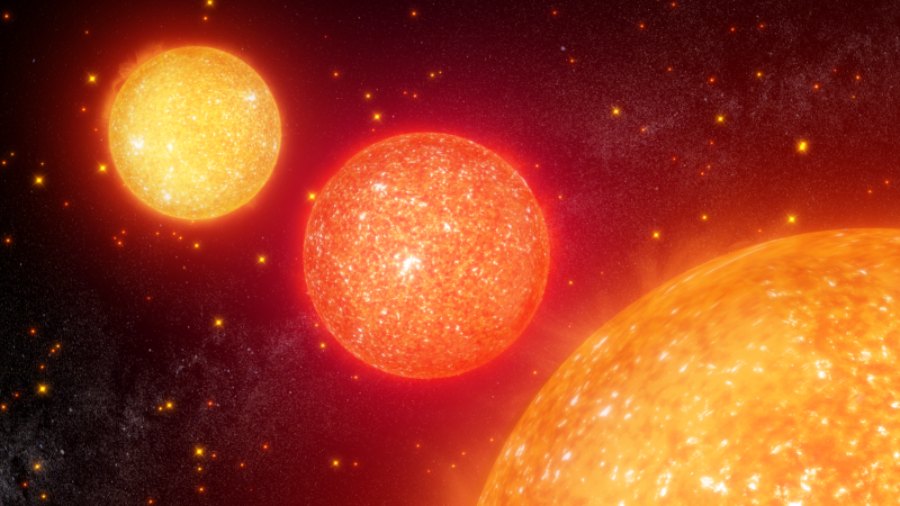
The Sun’s surface temperature has plummeted to about 3,000 degrees in little under seven billion years, while its age has increased to around 11.6 billion years. This causes it to seem red rather than yellow. Concurrently, its size and pace of expansion are both on the rise. We now see a crimson enormous Sun. Slow evolution for around 12 billion years is followed by rapid change along the red giant branch.
The Sun continues to expand, and as it does so, it generates a more powerful solar wind, via which it sheds even more of its outer layers. There is a 30% reduction in mass as a consequence. The Earth’s surface is now covered by a worldwide ocean of lava, and its atmosphere has been almost entirely blasted away by the powerful solar wind, bringing the temperature to nearly 2,000 degrees. Above the horizon, the Sun is a massive crimson orb that takes up about a third of the sky.
Are the planets going to make it?
For the planets Mercury, Venus, and Earth, the struggle for survival has officially begun. With the Sun’s continued expansion, they are propelled outward by the powerful solar wind and the decreasing solar mass, and their orbits move further from the red giant. Their only hope of making it through the Sun’s red giant phase is if their orbital change happens quicker than the star’s continuous expansion.
Both Mercury and Venus, however, are destroyed when the Sun’s growth rate increases rapidly leading up to the red-giant phase’s apex. In under five million years, the solar radius will have traversed the inner solar system, Smith explains. The red giant will swallow Mercury and Venus in the process.
Isn’t Earth a concern, too?
Will Earth be able to keep going?
The Sun is around twelve billion years old, the age at which red giant stars typically reach their maximum size. To an observer on Earth, it now seems to take up more than half of the sky. More than 2,700 times brighter and almost 250 times bigger than before the change started. Now that we’ve moved beyond Pluto, the habitable zone of the solar system extends much further out into the galaxy. Both Mercury and Venus are completely submerged in the Sun at this point.
The Earth is up next, right? Our planet’s chances of outrunning the red giant were determined by Robert Smith of the University of Sussex and Klaus-Peter Schröder of the University of Guanajuato a number of years ago. Scientists discovered two things that work together to delay Earth’s “escape” from its current orbit.
To begin, there are gravitational interactions between the Sun and Earth that grow as the distance between them decreases, slowing down Earth’s velocity. Due to this, its orbit becomes more condensed and its velocity slows down. As solar outer shells approach Earth, a second braking force, friction, becomes increasingly significant.
Earth is presently passing through the initial gas spurs of the red giant rather than the vacuum of space. This not only slows it down, but also cancels out the orbital acceleration that was causing it to go further out into space.
As the Moon cracks
The Moon is similarly losing speed and altitude, and coming closer and closer to Earth, as a result of the gravitational pull exerted by Earth and its satellite. When its distance from the Earth drops below a certain point, the so-called Roche limit of roughly 18,500 kilometers, it will be ripped apart by the Earth’s tidal forces. The Moon’s gravitational pull weakens to the point where tidal forces may pull it apart, as Iowa State University’s Lee Anne Willson explains. This is known as the Roche limit.
Because of this, Earth is currently considered a ring planet, with a thick ring system of lunar debris stretching about 37,000 kilometers from its equator. Not even this can continue forever.
Larger fragments initially, then smaller ones as well, fall to Earth’s blazing, lifeless surface due to the tidal forces and friction of an increasingly hotter and denser space environment.
Inconceivable destruction
But even while all is taking place, the Sun is drawing ever closer. At 12.17 billion years when the Sun reaches the height of the red giant phase, the Earth’s orbit will have grown by no more than 1.5 astronomical units. That, however, is a ridiculously inadequate value to escape the Sun. Therefore, Earth cannot possibly catch up to the red giant.
In 7.59 billion years, the rocky mantle of Earth will be torn apart and burned up by the Sun’s intense heat and huge gravity, and then, a few hundred years later, the gigantic iron core will be destroyed as well. Before the Sun reaches the end of the red giant branch, the researchers predict that “the Earth will be consumed and annihilated.” It will continue to expand for another 0.25 astronomical units, or another 500,000 years from now.
That leaves Earth as the Sun’s most probable last planetary casualty.
Complete destruction of the solar system and the Sun

After the destruction of Earth, the Sun likewise enters a new phase, with an internal temperature of roughly 100 million degrees due to its advanced age of 12.33 billion years. The core’s temperature and pressure have increased to the point where helium atoms are beginning to fuse together. Carbon is created when helium is fused. Furthermore, our star is currently shedding even more of its outer shell and becoming much smaller and lighter once again.
However, the helium fire won’t keep going forever: After a little over a hundred million years, the helium inside the Sun has also run out. Since the Sun is now too small to perform carbon fusion, its final stages of death have begun. Its core is collapsing due to a decrease in nuclear fusion, and its only loosly bound gas shells are being blown away by an increasingly powerful stellar wind.
About half of our star’s mass has been gone, and it is currently pulsating and dying. Radiation bursts and the sudden ejection of ever-greater quantities of envelope material result from this “age tremor,” revealing the star’s bare core at its center. Extreme compression reduces its mass from 0.55 solar masses to the size of Earth.
Do white dwarfs have planetary nebulas?
The Sun so degenerated that it is now a white dwarf, the last stellar remnant. Even though nuclear fusion has stopped, this star remnant is 3,500 times brighter than the Sun is now. Now what? For a long time, it was unknown whether this solar white dwarf would form a planetary nebula or just radiate alone until it eventually died. Excited by the white dwarf’s high-energy radiation, the surrounding gases flash in a rainbow of colors.
It had been unclear to astronomers whether or not our Sun would provide such a colorful legacy. Models predicted that a star with a mass of less than twice that of the Sun would produce a planetary nebula that was too weak to be seen, as explained by Albert Zijlstra of the University of Manchester. But a few years ago, he and his colleagues discovered that, right before a white dwarf arises, the cores of stars heat up more than previously believed.
All that is left

In other words, “it will be just hot enough when it finishes to ionize its ejected material,” as the researchers put it about our Sun. The Sun has a low enough mass to yet create a planetary nebula. If it had even a little percentage less mass when it died, it would just fizzle away. Instead, our Sun will leave a planetary nebula, although a very dim one.
The fate of the outer planets when the Sun dies remains unknown. The red giant won’t be able to engulf them, but its gravitational turbulence and eruptions might be deadly. Numerous white dwarfs have been seen with a thick dust ring of planetary debris around them. Some of these material disks contain even bigger relics of once-stable planet cores. Whether Mars, Jupiter, and the others will experience the same thing is unknown.
In around eight billion years, a little white dwarf will be there, getting colder and darker, where the solar system with its eight planets and innumerable dwarf planets and asteroids previously rested. A colorful gas nebula shines softly around it, revealing the decaying remains of this once-prolific system.
Bibliography
- Asplund, M.; Grevesse, N.; Sauval, A.J. (2006). “The new solar abundances – Part I: the observations”. doi:10.1553/cia147s76.
- “Eclipse 99: Frequently Asked Questions”. NASA.
- “First Ever STEREO Images of the Entire Sun”. NASA. 2011.
- Hansen, C.J.; Kawaler, S.A.; Trimble, V. (2004). Stellar Interiors: Physical Principles, Structure, and Evolution. ISBN 978-0-387-20089-7.
- “The End Of The Sun”. Northwestern.edu.


